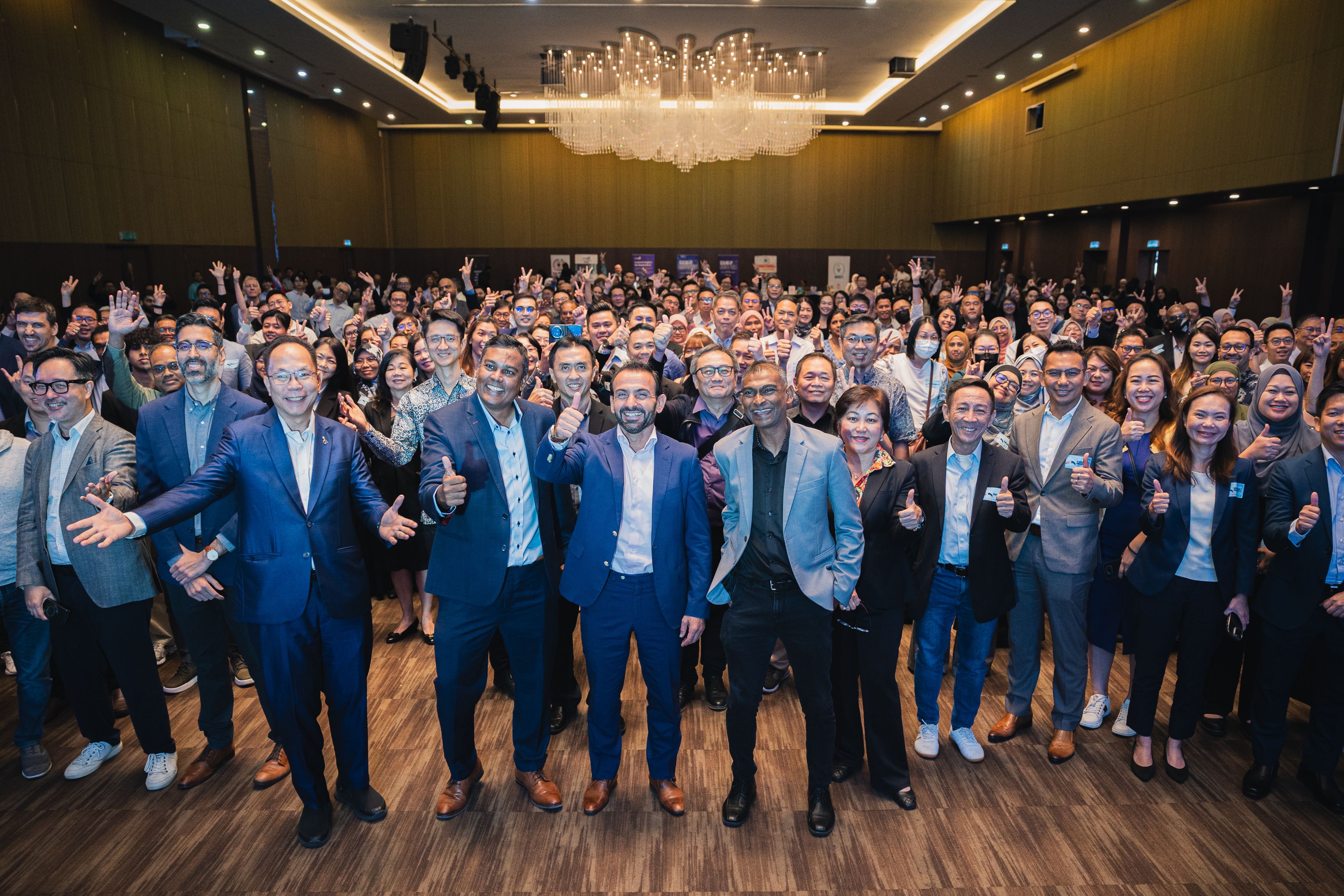The Loneliness Epidemic at Work: What Leaders Must Know and Do

Freepik
It’s 5:28 p.m. The final call has ended, the inbox still overflows, and the laptop lid finally closes after yet another day of meetings, messages, and mounting deadlines.
On the surface, it’s been a productive day. But beneath the busyness, something deeper lingers: a quiet, unshakable sense of disconnection.
Despite hours of communication, there hasn’t been a single moment of real connection. No spontaneous chats, little shared laughter, no sense of being seen. Just task after task, screen after screen.
Sound familiar?
Many people experience days like this. Days where they are surrounded by digital noise and people, yet still feel emotionally adrift. It’s not burnout, nor is it boredom. Instead, it’s loneliness.
Loneliness is often associated with the elderly or the socially isolated, but it is increasingly becoming a silent epidemic in our workplaces, with employees feeling more disconnected than ever. The irony? We’ve never had more tools to connect, yet we’ve never felt so alone. There is an appearance of constant connectivity, but the reality is one of quiet isolation.
This emotional disconnection is not only a wellbeing issue. It’s a performance issue, a leadership issue, and a strategic risk. As a growing body of research reveals, workplace loneliness affects individual health, organisational culture, and even bottom-line results. And yet, too few organisations are acknowledging the issue, let alone acting on it.
The Growing Reality of Loneliness at Work
Gallup’s 2024 global report found that 20% of employees feel lonely at work ‘very often’ or ‘always’. That figure is even higher for remote workers and younger employees, underscoring the shift in traditional workplace structures and social dynamics.
Loneliness at work is not simply a lack of social contact. It’s the subjective perception of inadequate connection, and it can arise even in a bustling office or on a packed Zoom or Teams call. As Professor Sarah Wright and colleagues explain in the New Zealand Journal of Psychology, loneliness stems from perceived deficits in one’s social relationships, and it’s not always resolved by being around others.
Modern workplace trends, including remote and hybrid work, flatter hierarchies, and increased digital communication, may enable autonomy but also erode the informal social fabric that fosters connection, belonging, and trust.
Read: The Power of Authentic Alignment in Your Life
Causes of Workplace Loneliness
The causes of loneliness are not isolated or singular. They are complex and connected. They include:
- Organisational Design and Work Structures – High workload, siloed teams, and over-reliance on digital communication create conditions that are ripe for isolation. When roles are highly individualised, with limited collaboration or informal interaction, the opportunity for connection diminishes.
- Leadership Gaps – Leaders who focus solely on performance metrics and overlook the emotional and relational needs of their team unintentionally cultivate environments where loneliness can take root. A lack of psychological safety, inconsistent communication, or perceived indifference from leadership compounds this sense of disconnection.
- Social Comparison and Impostor Syndrome – In fast-paced, high-performing cultures, employees may fear being vulnerable or admitting to struggles. This breeds a climate of inauthenticity. As noted by researchers in Frontiers in Psychology, when employees feel they must suppress authentic emotions to meet perceived expectations, they become more susceptible to emotional exhaustion and social withdrawal.
- Identity Threat and Exclusion – Diversity without inclusion can exacerbate feelings of loneliness. Marginalised groups, particularly those in minority demographics within an organisation, may feel unseen or excluded from informal networks. Over time, these micro-exclusions add up.
The Individual Cost of Loneliness
The physical and psychological effects of chronic loneliness are well-documented, including impaired cognitive performance, increased risk of cardiovascular disease, poor immune functioning, sleep disturbances, and depression.
Professor John Cacioppo and Louise Hawkley describe a “self-reinforcing loneliness loop“; a cycle where perceived isolation leads to hypervigilance for social threat, increased defensiveness, and withdrawal behaviours, which in turn perpetuate the loneliness.
In the workplace, these patterns manifest as decreased engagement, increased absenteeism, reduced collaboration, and impaired decision-making. Lonely employees are more likely to have lower engagement, mistrust colleagues, avoid taking risks, and disengage from innovation opportunities.
Organisational Consequences
Beyond the individual, loneliness carries a hefty organisational price. Gallup’s data indicates a connection between loneliness and lower engagement, reduced productivity, and increased turnover. Employees who feel isolated are less likely to contribute to team goals or stay with the organisation long-term.
A lonely workforce also weakens culture.
Social capital – the trust, mutual respect, and shared identity that enable collaboration – relies on relationships. When those relational ties fray, performance suffers. The result? An organisation that is less agile, less resilient, and less capable of managing change and adapting to the future of work.
What Leaders Can Do: A Multi-Level Approach
Tackling loneliness requires action at the individual, team, leader and organisational levels.
Here’s where leaders can start:
1. Individual Level: Build Connection Literacy
Leaders need to normalise conversations about connection and belonging. Equip employees with language and strategies to articulate their emotional needs. Encourage self-awareness and help team members identify when they are withdrawing or disengaging.
Create safe, informal spaces, such as virtual coffee catch-ups or walking meetings, where human connection takes priority over task orientation.
Action Tip: Integrate regular reflective practices in your 1:1s. Ask: “How connected are you feeling to the team right now?” or “What support would help you feel more included?”
2. Team Level: Foster Psychological Safety and Inclusion
Psychological safety (which I have written about many times before) is the belief that it’s safe to take interpersonal risks. That belief is a foundation for connection. Teams with high psychological safety are more likely to share ideas, express emotions, and support one another.
Leaders should role model vulnerability and prioritise inclusive rituals. From rotating meeting facilitation roles to celebrating diverse holidays, small acts of inclusion signal that everyone belongs.
Action Tip: Use check-ins at the start of meetings to see how people are doing emotionally, not just operationally. Encourage team storytelling to build empathy and shared identity.
Listen: The Power of Contextual Trust in the Workplace
3. Leadership Level: Make Connection a Strategic Priority
Loneliness is not a “soft” issue; it’s a business-critical one. Senior leaders must treat human connection as a performance driver. For example, you can review the workplace experience to understand where the connection breaks down.
Track not just engagement scores but relational health indicators. Are teams collaborating across boundaries? Are new hires building networks quickly? Are inclusion efforts translating into belonging?
Wellbeing initiatives that only target the individual while failing to address team and organisational norms will have a limited impact.
Action Tip: Embed connection goals into leadership KPIs. Recognise and reward leaders who create environments of trust, cohesion, and belonging.
4. Organisational Level: Redesign Work for Belonging
From hybrid work policies to office layouts, design decisions must be made intentionally to support connection. Too often, remote work is implemented with efficiency in mind but without adequate social scaffolding.
Use technology as a bridge, not a barrier. Tools should enable spontaneous conversations, visibility into others’ work, and opportunities for informal interaction.
Action Tip: Consider creating cross-functional ‘connection pods’ or peer mentoring groups to build bonds beyond immediate teams.
Rehumanising Work
In an era of AI, automation, and rising complexity, our need for meaningful human connection is more vital than ever. As we rethink and navigate the future of work, we must also reconsider how we interact with and relate to one another in the workplace.
Loneliness is not a personal flaw or a productivity hurdle to overcome; it is a natural human experience. It’s also a signal that something deeply human is missing, which means that for leaders, it’s a call to action.
Rehumanising work means seeing connection not as an extra thing to do but as a necessity. It requires you to ask not only what your people are doing but how they are feeling. And it means leading with presence, empathy, and the courage to create workplaces where no one feels alone.
Republished with courtesy from michellegibbings.com.
Step Into the Room Where Leaders Grow
Leadership
Tags: Communication, Consultant Corner, Alignment & Clarity, Empathy
Michelle Gibbings is a workplace expert and the award-winning author of three books. Her latest book is 'Bad Boss: What to do if you work for one, manage one or are one'. www.michellegibbings.com.






